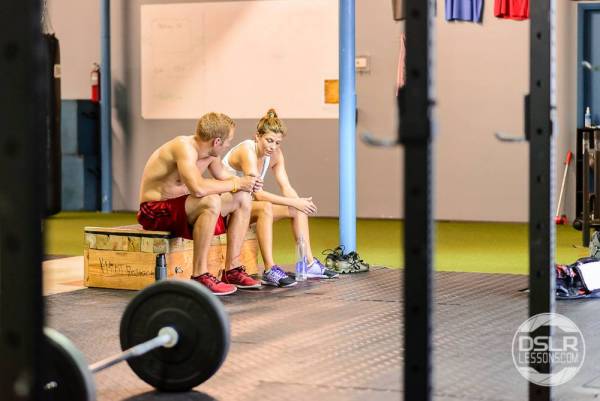I usually stay away from the reality TV shows. However, I have sometimes been sucked into watching Survivor. I found it interesting to see the dynamics of people in a group. The social psychologist in me always wanted to point out that the context is really what made people work as a team or to stab each other in the back.
The earlier parts of the show had team-against-team competitions. Everyone worked together and created a great community. When the context changed to finding one winner, then everyone worked toward his or her own individual goal. It isn’t that people are at the core evil. It is what the context asked of them in the situation. Group exercise classes might be prone to these same dynamics.
You Go, I Go
I have been visiting many gyms lately and the thought struck me while I was at Condition Gym in Atlanta, Georgia. The workout consisted of a you-go-I-go type of setup. One team lined up on one side and the other facing. Here is an example of a similar style of workout:
- Warm up: You-go-I-go ladder of swings (1,2,3,4…10,9,8,7…1)
30 seconds on, 30 off, for 3 rounds:
- Strict kettlebell press strong arm (squat with one kettlebell and then strict press)
- Strict kettlebell press stronger arm
- Row strong arm
- Row stronger arm
- Plank
- Cool down: You-go-I-go ladder of swings (1,2,3,4…10,9,8,7…1)
The great thing about this workout is that it has built-in cheering and support. As you are resting, you are also cheering on the team that is working. As you are working, the other team is cheering for you. Everyone understands the other team’s pain.
Compare that workout to a comparable workout where everyone competes against each other (e.g., “Fran“). It is great if you finish early (maybe it feels better because you finished before others) and you can cheer on your teammates. But the incentive system in CrossFit seems to be frequently setup so that the individual gets the best score regardless of form or working with others. Maybe we can tweak existing incentive systems to get people fit, as well as keeping them injury free and building a long-lasting community.
Game Theory
Game theorists talk about zero sum and non-zero sum games:
- A zero sum game is where there is a winner and a loser. The total of winning and losing equals zero.
- A non-zero sum game is where everyone’s outcome is correlated. In a team event the whole team wins or loses together.
CrossFit group classes can be set up in a way that is either zero sum or non-zero sum. Traditional group classes where a score is kept can turn into a zero sum game with winners and losers. But in theory, a stronger cohesiveness is built when incentives lead to a non-zero sum system and everyone helps each other to win. For example, marriages that are built on one person winning tend to be less successful, but marriages set up on both partners cooperating tend to flourish.1,2
What if we followed the rules of game theory and build a non-zero game into our workouts? We could just add a few words to the following workout (you-go-I-go) and now we have a great team-building exercise. We could even compete against the other teams and classes that workout throughout the day.
Armor Building Workout
10 minute AMRAP (you-go-I-go) Kettlebell complex:
- 2 double kettlebell cleans
- 1 double kettlebell military press
- 3 double kettlebell front squats

The Take Home
Group exercise programs often lead to a great feeling of community. I wonder if we can build an even better community by integrating more teamwork into the workouts?
Building a context where people are all working together as a team has great potential (in motivating members and the community). Although it is fun to compete, most people have a goal of becoming more fit as their primary goal. Building a context where everyone can support each other in that goal is most important.
I know many coaches program team workouts of the day. If you’ve done this, please leave comments on your efforts and results. And for anyone reading this, what are your thoughts on team workouts? Do they work for you, and if so, why?
References:
1. Tim Cole and Bruno Teboul. “Non-Zero-Sum Collaboration, Reciprocity, and the Preference for Similarity: Developing an Adaptive Model of Close Relational Functioning.” Personal Relationships 11(2) (2004): 135–60.
2. Marjorie B. McElroy and Mary Jean Horney. “Nash-Bargained Household Decisions: Toward a Generalization of the Theory of Demand.” International Economic Review (1981): 333–49.
Photos courtesy of CrossFit Empiricaland DSLR Lessons.






